Philips 276E6 27-inch Quantum Dot Monitor Review
We've been hearing about Quantum Dots for a while but Philips' 276E6 is the first computer monitor to use the technology. It's a 27-inch IPS-ADS screen with FHD resolution and an Adobe RGB color gamut. Today, we check it out in our labs.
Why you can trust Tom's Hardware
Color Gamut And Performance
For details on our color gamut testing and volume calculations, please click here.
The 276E6 is billed as an Adobe RGB display but it's not marketed for professional use. The Quantum Dot technology in use allows for an enormous color gamut but Philips has chosen to go for saturation and vividness over accuracy. It's a matter of personal preference, whether you are shopping for strict adherence to standards or simply a monitor that presents a rich and detailed image.
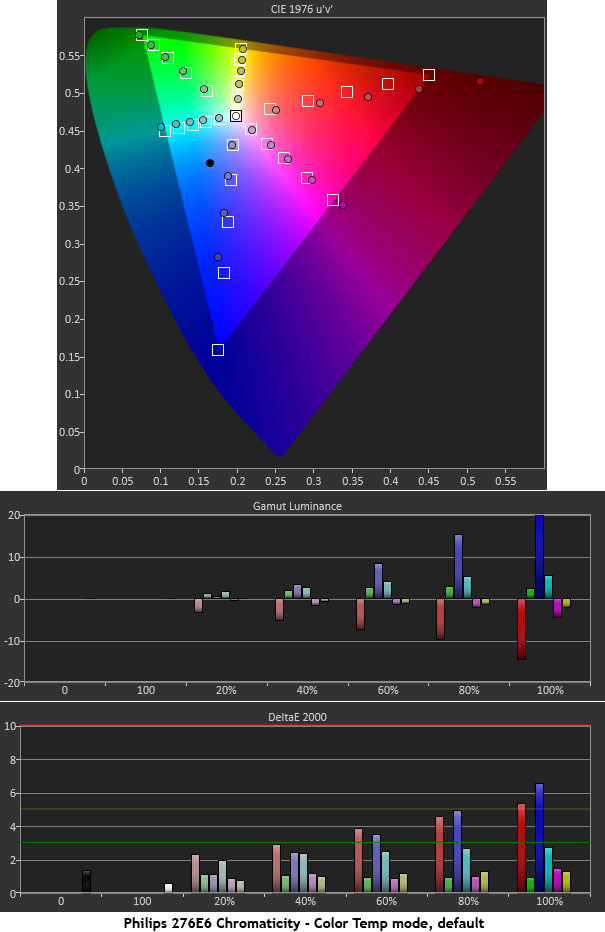
Regardless of mode, the 276E6 displays its native color gamut. There is no sRGB option nor is there a color management system. We've taken our measurement runs as they relate to Adobe RGB, which adds a lot of green. That primary tracks the standard extremely well as do the cyan and yellow secondaries. Their luminance levels are spot-on as well.
Where things become interpretive is in blue, which is under-saturated; and red, which is significantly over. The magenta secondary stays pretty close to target. Luminance levels are adjusted to compensate so the resulting errors aren't too high. In practice, you'll see a lot more red and other warm tones than you may be accustomed to.
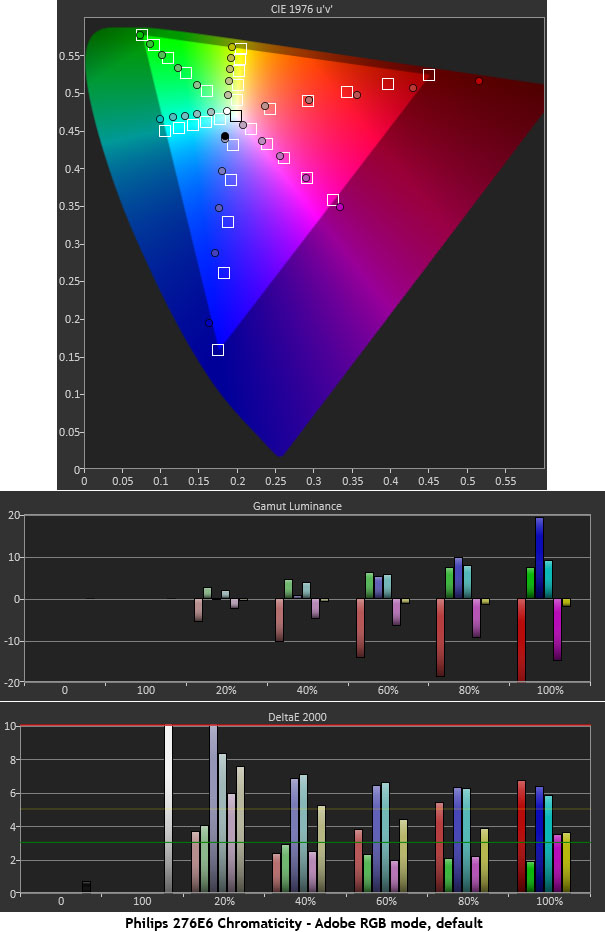
Switching to Adobe RGB mode changes the white point so cyan and yellow are pulled off-target. This results in an average error of 5.02 Delta E. Luckily, we can fix this with the RGB controls as seen on the final chart.
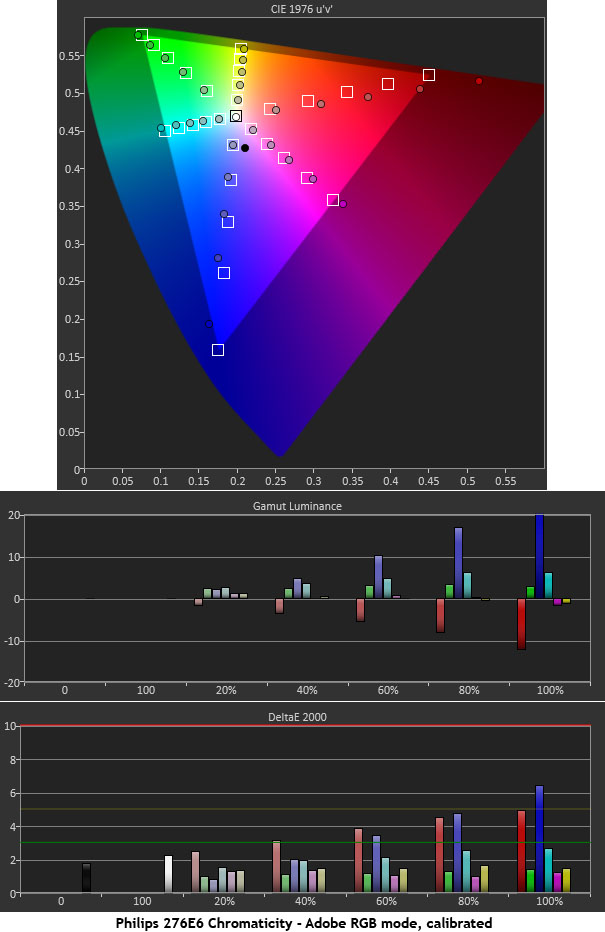
Calibration returns the gamut and luminance results to where they were in Color Temp mode. The difference is now we have control of Brightness. The conclusion from our gamut tests is that while the 276E6 qualifies as an Adobe RGB monitor, it takes license in certain areas to achieve a designed color presentation rather than a standard one.
Now we return to the comparison group.
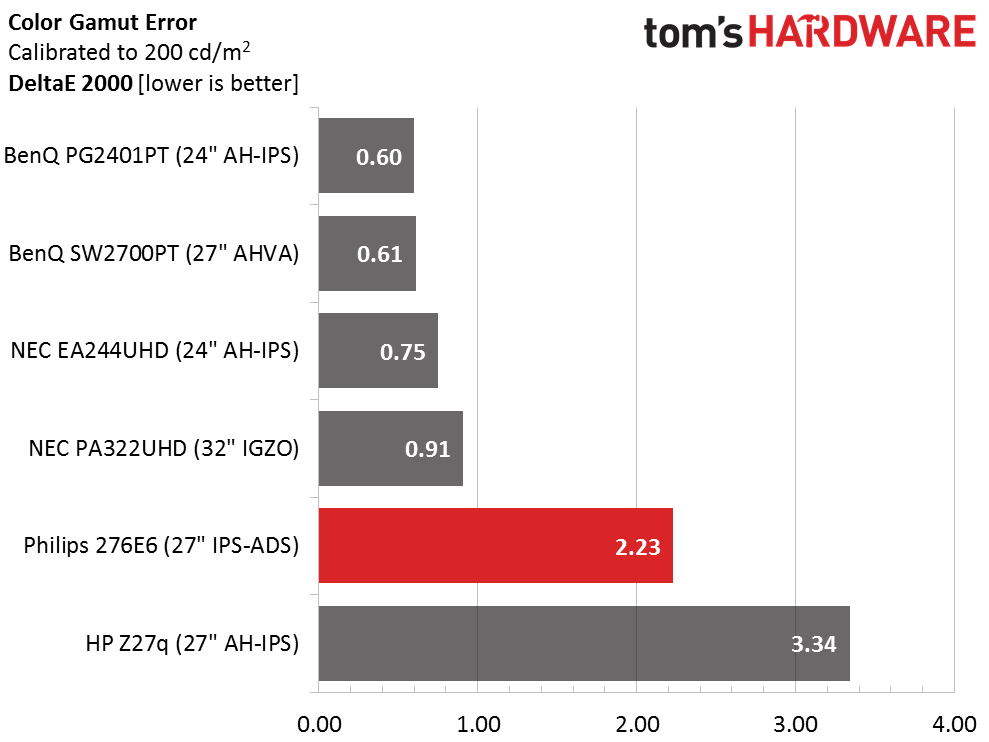
Users engaged in color-critical work will be better-served by a factory-calibrated screen like one of the BenQ or NEC products. And the HP is much more accurate in its sRGB mode. The Philips is more for people that want to work with rich saturated tones that don't necessarily conform to established specs.
Gamut Volume: Adobe RGB 1998 And sRGB
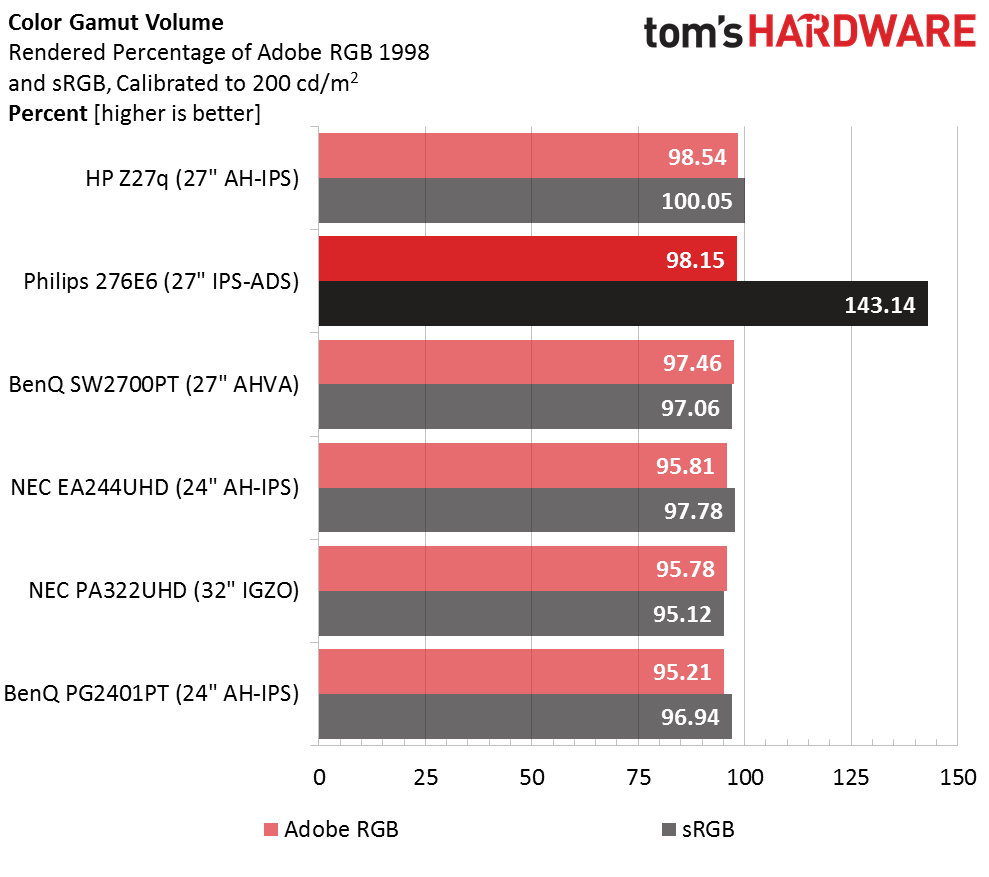
Without the ability to switch between gamut standards, the 276E6 exceeds sRGB volume by over 43 percent. It does meet the Adobe RGB spec but with an under-saturated blue primary and an over-saturated red one, it'll require a software LUT calibration if it is to be used as a proofing monitor.
Current page: Color Gamut And Performance
Prev Page Grayscale Tracking And Gamma Response Next Page Viewing Angles, Uniformity, Response And LagStay On the Cutting Edge: Get the Tom's Hardware Newsletter
Get Tom's Hardware's best news and in-depth reviews, straight to your inbox.

Christian Eberle is a Contributing Editor for Tom's Hardware US. He's a veteran reviewer of A/V equipment, specializing in monitors. Christian began his obsession with tech when he built his first PC in 1991, a 286 running DOS 3.0 at a blazing 12MHz. In 2006, he undertook training from the Imaging Science Foundation in video calibration and testing and thus started a passion for precise imaging that persists to this day. He is also a professional musician with a degree from the New England Conservatory as a classical bassoonist which he used to good effect as a performer with the West Point Army Band from 1987 to 2013. He enjoys watching movies and listening to high-end audio in his custom-built home theater and can be seen riding trails near his home on a race-ready ICE VTX recumbent trike. Christian enjoys the endless summer in Florida where he lives with his wife and Chihuahua and plays with orchestras around the state.
-
xenol Finally! I've been really wanting to see this technology come through to more than two products (that I'm aware of)Reply -
Dan414 I'm not too concerned with power consumption at my desk. How about phones and laptops - will we see quantum dot screens there soon?Reply -
gunbust3r Takes some design ability to make a 27" look more like a 22", good job on those monster size white bezels. :pReply -
sillynilly Love the tech, but the screen specs at that size will make it look like monster dot technology. 1920 x 1080 at 27" looks just horrendous after using a higher rez monitor. Some monitor OEMs are a bit behind the times it seems (although this tech is pretty cool).Reply -
picture_perfect ReplyFor gamers seeking vivid color and a bright image, your monitor has arrived. 18ms is an excellent score for any 60Hz display
I can only LOL and I never LOL. 18ms response (57ms total lag) is just god awful terrible. These arbitrary endorsements are getting lame. -
CaedenV Did I miss where it has a price? It can be the best consumer display in the world, but if it is $5,000 then that would not make it a recommended buy.Reply -
Nintendork All this quantum bull* and still 1000:1? Meanwhile tablets and smartphones using IPS neo from jdi with near 2000:1.Reply
Or even better an RGB OLED display.